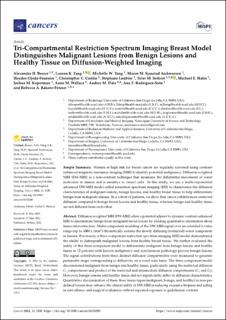| dc.contributor.author | Besser, Alexandra H. | |
| dc.contributor.author | Fang, Lauren K. | |
| dc.contributor.author | Tong, Michelle W. | |
| dc.contributor.author | Andreassen, Maren Marie Sjaastad | |
| dc.contributor.author | Ojeda-Fournier, Haydee | |
| dc.contributor.author | Conlin, Christopher C. | |
| dc.contributor.author | Loubrie, Stéphane | |
| dc.contributor.author | Seibert, Tyler Michael | |
| dc.contributor.author | Hahn, Michael E. | |
| dc.contributor.author | Kuperman, Joshua M. | |
| dc.contributor.author | Wallace, Anne M. | |
| dc.contributor.author | Dale, Anders | |
| dc.contributor.author | Rodríguez-Soto, Ana E. | |
| dc.contributor.author | Rakow-Penner, Rebecca A. | |
| dc.date.accessioned | 2023-01-18T12:44:30Z | |
| dc.date.available | 2023-01-18T12:44:30Z | |
| dc.date.created | 2022-09-26T13:25:54Z | |
| dc.date.issued | 2022 | |
| dc.identifier.citation | Cancers. 2022, 14 (13), . | en_US |
| dc.identifier.issn | 2072-6694 | |
| dc.identifier.uri | https://hdl.handle.net/11250/3044314 | |
| dc.description.abstract | Diffusion-weighted MRI (DW-MRI) offers a potential adjunct to dynamic contrast-enhanced MRI to discriminate benign from malignant breast lesions by yielding quantitative information about tissue microstructure. Multi-component modeling of the DW-MRI signal over an extended b-value range (up to 3000 s/mm2) theoretically isolates the slowly diffusing (restricted) water component in tissues. Previously, a three-component restriction spectrum imaging (RSI) model demonstrated the ability to distinguish malignant lesions from healthy breast tissue. We further evaluated the utility of this three-component model to differentiate malignant from benign lesions and healthy tissue in 12 patients with known malignancy and synchronous pathology-proven benign lesions. The signal contributions from three distinct diffusion compartments were measured to generate parametric maps corresponding to diffusivity on a voxel-wise basis. The three-component model discriminated malignant from benign and healthy tissue, particularly using the restricted diffusion C1 compartment and product of the restricted and intermediate diffusion compartments (C1 and C2). However, benign lesions and healthy tissue did not significantly differ in diffusion characteristics. Quantitative discrimination of these three tissue types (malignant, benign, and healthy) in non-pre-defined lesions may enhance the clinical utility of DW-MRI in reducing excessive biopsies and aiding in surveillance and surgical evaluation without repeated exposure to gadolinium contrast. | en_US |
| dc.language.iso | eng | en_US |
| dc.publisher | MDPI | en_US |
| dc.rights | Navngivelse 4.0 Internasjonal | * |
| dc.rights.uri | http://creativecommons.org/licenses/by/4.0/deed.no | * |
| dc.title | Tri-Compartmental Restriction Spectrum Imaging Breast Model Distinguishes Malignant Lesions from Benign Lesions and Healthy Tissue on Diffusion-Weighted Imaging | en_US |
| dc.title.alternative | Tri-Compartmental Restriction Spectrum Imaging Breast Model Distinguishes Malignant Lesions from Benign Lesions and Healthy Tissue on Diffusion-Weighted Imaging | en_US |
| dc.type | Peer reviewed | en_US |
| dc.type | Journal article | en_US |
| dc.description.version | publishedVersion | en_US |
| dc.source.pagenumber | 0 | en_US |
| dc.source.volume | 14 | en_US |
| dc.source.journal | Cancers | en_US |
| dc.source.issue | 13 | en_US |
| dc.identifier.doi | 10.3390/cancers14133200 | |
| dc.identifier.cristin | 2055481 | |
| cristin.ispublished | true | |
| cristin.fulltext | original | |
| cristin.qualitycode | 1 | |

